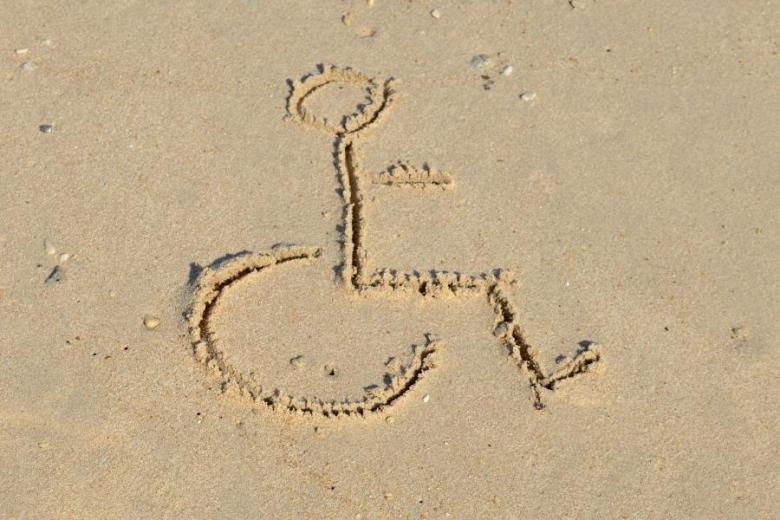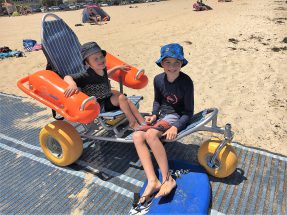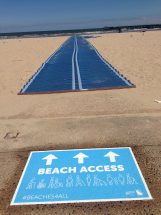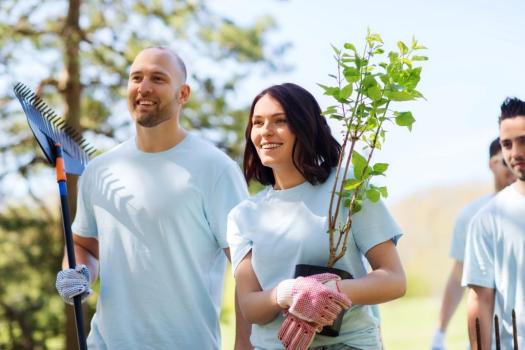
Councils seeking to make their beaches accessible to all residents, including those living with disability, shouldn’t let cost, maintenance or liability get in their way.
That’s according to Tom Bevan, access and inclusion officer with Hobsons Bay City Council, which is on track to having two fully accessible beaches by 2020.
Since a trial in December 2015, Hobsons Bay City Council has been implementing a multi-pronged approach to make Williamstown and Altona beaches fully accessible to its 16,000 residents who live with a disability.
This has included the laying of special matting, which has been imported from France, and the use of different beach wheelchairs for various users.
The program also includes the installation of a changing places facility, which features a hoist for transfers, an online booking system and an accessibility upgrade to the surrounding urban area.
“We wanted to make the beaches accessible but the question was how to do it,” Mr Bevan said. “It was recommended we use matting and beach wheelchairs. But it wasn’t just about the resources, there was also issues around the nature of the beach, shifting sand, the tide.”
After an evaluation of the pilot in late 2015, which tested the matting on one beach and a beach wheelchair on the other, the council agreed on the recommended six-point plan to make the two beaches fully accessible by 2020.

Mr Bevan will discuss the council’s experience at the upcoming Universal Design Conference in Brisbane.
In addition to providing a changing places facility and permanent matting on the beach, which was an Australian first, the plan included acquiring four different wheelchairs (for adults, children and independent users, and one for the water).
“We wanted the system to be easy to access so the online booking system enables anyone anywhere in the state to book a chair and have it all organised for them with minimal effort,” says Mr Bevan.
“What was brilliant was that the councillors endorsed all of the plan and told us to go and do it… We had some support from the Bendigo Community Bank and our local trader’s association, which donated a chair, but the primary funding has come from the council.”
Progress report
Mr Bevan says the council is ahead of its 2020 target, with Altona having matting 24/7, three chairs in use (for adults, children and the water), an online booking system and a changing places facility that includes a hoist and adult changing table.
He says the changing facility is “a game changer.”
“It means that anyone, all abilities, are able to access the beach now. It was something we found in the first year – if someone needed a transfer and didn’t have support, they couldn’t use a chair. Whereas with the hoist it’s made that job a lot easier.”
The final step for Altona – a beach wheelchair for independent users – comes in December.

Williamstown also has matting down 24/7, two wheelchairs (children and for water) and an online booking system, he says.
“Williamstown is slightly behind [Altona] because we didn’t have the ability to put in a changing facility, there’s some restructuring going on there so we need to wait for that to maximise the opportunity,” Mr Bevan said.
Beyond the initial accessible plan, Mr Bevan says the council has learned “there’s a lot more that can be done.”
“At the start it was all about getting people to the water’s edge. Whereas last summer we had a snorkeling day, so because of the resources we had, we were able to get people in wheelchairs into the sea, snorkeling, swimming around the peer, looking at the marine life.
Mr Bevan says the return on investment has been incredible. “You can see the joy on some people’s faces, the emotions. You get an understanding that by providing access it’s improving people’s lives and giving them amazing opportunities.”
The accessibility features are delivering benefits beyond residents living with disability, he adds.
“We now have mothers’ groups who come down to the beach, wheel their prams to the water’s edge and set up there. Equally we had seniors’ groups in their wheelchairs putting their feet in the water for the first time in decades.”
Tackle ‘barriers’ head on
Mr Bevan says the council has been sharing its experience with other local governments and helping dispel some myths around perceived barriers.
While many highlight issues with risk and liability, Mr Bevan said the program was insurable under the local government scheme. Similarly, on cost, he said the initiative was “not that expensive and the return you get is phenomenal.”
In total, the permanent matting and beach wheelchairs has cost around $76,000, while the changing facilities could be incorporated into the council’s existing budget for facilities upgrades.
Mr Bevan says there have been important milestones in the program’s development, like seeing the positive impacts for people living with disability.
“Having the matting, chairs and hoist is bringing families together. Rather than having a young person at the edge of a beach, away from it all, now the whole family can enjoy the experience together. It’s an amazing thing to see.”
The Universal Design Conference takes place from 4-5 September in Brisbane.
Comment below to have your say on this story.
If you have a news story or tip-off, get in touch at editorial@governmentnews.com.au.
Sign up to the Government News newsletter.

